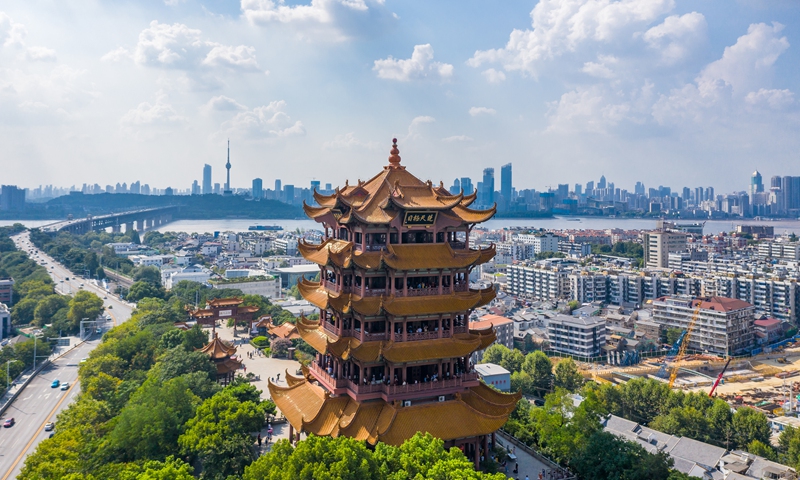
The Wuhan skyline, ( Photo: IC)
Wuhan, Central China's Hubei Province, the worst-affected city by COVID-19 outbreak, is mulling over a slew of latest measures to accelerate its revival, as the city gradually returns to normalcy.
Under the aegis of the Wuhan Natural Resources and Planning Bureau, the city has already begun to formulate a post-epidemic recovery scheme.
With five significant aspects of medication and healthcare, emergency and disaster prevention, smart community, healthy city, and economic revival, the scheme is designed to accelerate the strengthening of the city's weak points, enhance its foundation and bolster confidence.
Lü Bin, vice director of the Urban Planning Society of China and a professor at the College of Urban and Environmental Sciences of Peking University, who was one of the experts who participated in the consultation of the plan, thinks that the significance of the recovery scheme is that it is not just common planning, but planning to fill the short board and strengthen the weakness.
"Wuhan's development was quite good before the epidemic compared with other areas, but the sudden public health crisis exposed the weakness of the governance of the Chinese city. The incident caused people to reflect," Lü told the Global Times on Friday.
The details of the scheme will be laid out in six three-year action plans, including the improvement of medical and health facilities; upgrading urban and rural communities, sanitation facilities and emergency support; improvement of the ecology and functional quality; integrated transportation and emergency logistics, and construction of functional and highlighted areas.
The upgrading of health facilities is of the top priority. Wuhan will further optimize the layout of the city's hospitals, increase a certain number of general hospitals and hospitals for infectious diseases, comprehensively improve the standards of health care facilities and service at the community level, and establish a three-dimensional network of emergent first-aid stations covering both urban and rural areas.
Besides, the city will quicken its construction of 5G base stations in a bid to realize the full coverage of 5G networks by 2021.
Around late February when the unprecedented outbreak of COVID-19 was raging across the city, the bureau planned in advance and organized institutions, including Wuhan Planning & Design Institute, China Academy of Urban Planning and Design, and Tongji University, to initiate the research on Wuhan's post-epidemic revival plan.


